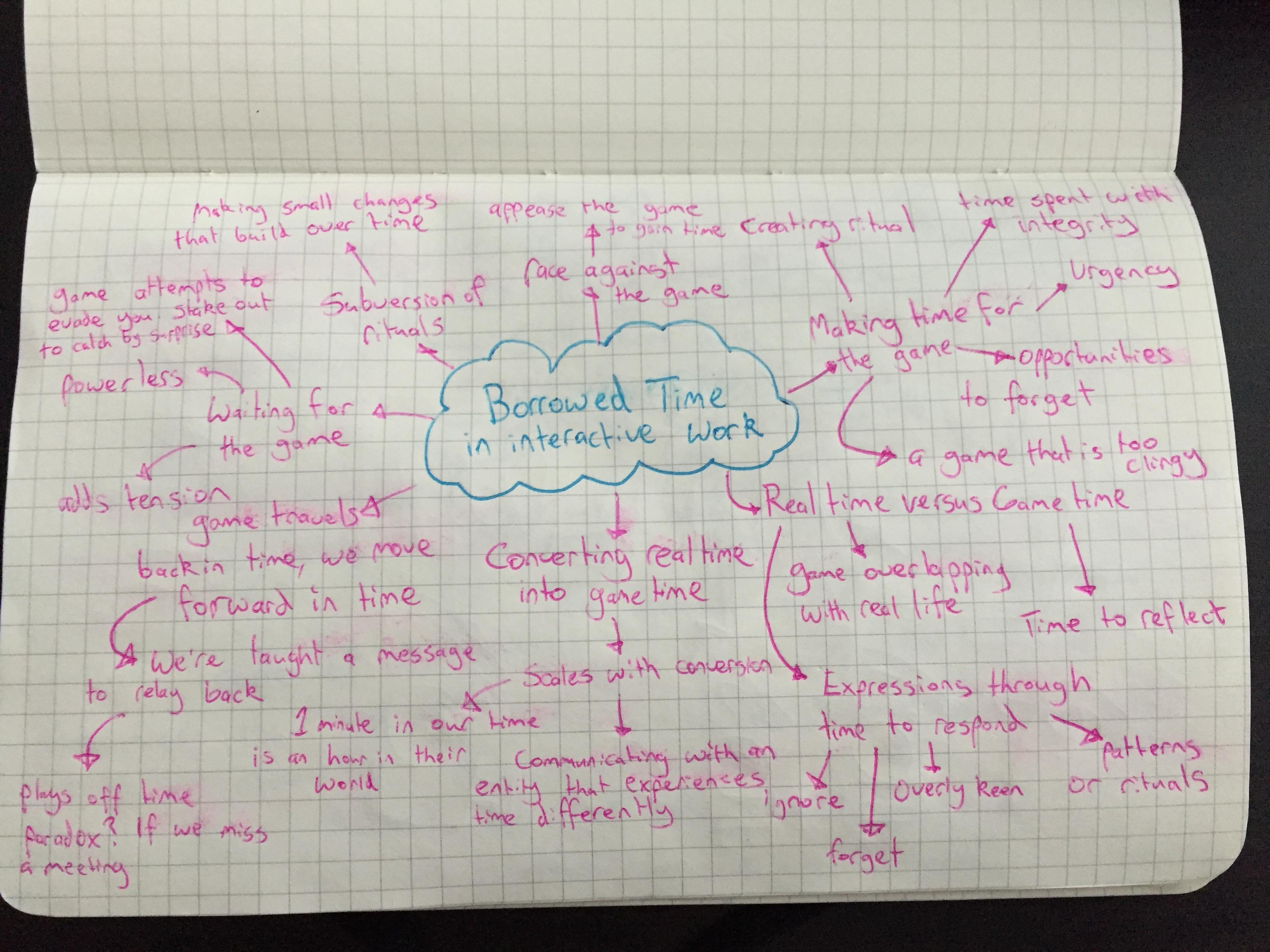
This week I explored ideas around real-time interactions in interactive works. I am interested in the idea of ‘borrowed time’ in a video game and the forms of expression or relationships that can be generated from real-time interactions.
One Idea I explored a little deeper is a short game that first appears as a wellness app that promotes habitual wellbeing practices. The app asks that you interact with it on a daily basis to help build mindfulness rituals into your everyday life. As you begin to participate in the daily activities, you start to notice an unsettling change in the tone as the app evaluates you based on quantitative data. Soon you become aware of another entity or user in the app that seemingly manipulates your data when you’re not around. Once you have learnt the patterns and behaviour of this entity, you can start to plan your interactions to intercept or avoid them.
I feel games are able to offer a unique relationship to story or character by overlapping into your real life, and through forms of expression around timings or commitments of interaction. I felt by exploring this concept of ‘borrowed time’ I could see many different avenues for unique storytelling.
Similar ideas have been explored in “Tender: Creature Comforts” by Kenny Sun (https://www.youtube.com/watch?v=PWHdO-Xm6LQ) which emulates the experience of online dating apps by having the characters in the game message you in real-time. You can also set up dates in the game, which you must keep track of yourself to ensure you don’t miss it. I am also inspired by “No Players Online” by Papercookies (https://papercookies.itch.io/no-players-online) which is set in an unreleased online game haunted by a mysterious entity.
This week I discovered the reason I struggle with story ideas is because I find it so overwhelming open ended. I find it incredibly hard to focus and make definitive choices about how I think the story should resolve. Game design is a problem solving discipline which is full of limitations that provide focus and clear objectives. Reckoning with this disparity, I decided to think of my story as a problem to solve by asking what kind of end experience do I want the reader to have. I found this gave me more focus, however, I still find it difficult to flesh out details and tend to gravitate to big picture or structural elements of storytelling.

